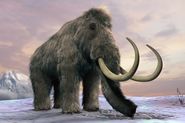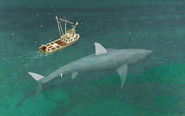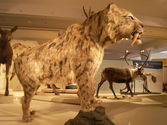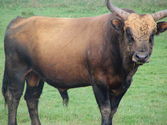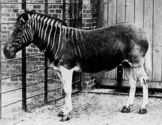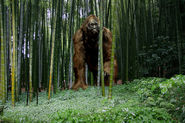The world’s marshes and delta areas have always been a breeding ground for predators, but sarcosuchus – the flesh crocodile – turned these wetlands into a personal feeding trough. Sarcosuchus is the 40-foot relative of the modern crocodile, equipped with thick outer scales, razor-sharp teeth, and an enormous set of jaws. Analysis of the creature’s skull led researchers to the conclusion that sarcosuchus was unable to perform the infamous death roll maneuver, but a simple examination of the creature’s size is enough to demonstrate that it was an exceptional hunter. In fact, sarcosuchus was probably one of the top predators in habitat, capable of hunting big game using stealth and swift ambushes. Much of the creature’s traits were passed down to its far smaller relative, the Nile crocodile, but its full length and weight will never be matched by a modern day reptile.
Scientific Name: Sarcosuchus imperator | Physical Description: An aquatic reptile with thick, armored scales, webbed feet, and a protruding set of jaws, typically growing up to 40 feet long. | Went Extinct: 112,000,000 years ago
Observed Habitats of Fossil Sites: The Sahara, Brazil | Closest Living Relative: Nile Crocodiles | Fun Fact: Some experts have concluded that this giant crocodile continued to enlarge throughout its lifespan, and required 50 to 60 years to be considered fully grown.

 GOAT Series Staff
GOAT Series Staff

